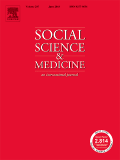Posted on June 01, 2018
Source: Social Science and Medicine

Is there synergy in syndemics? Psychosocial conditions and sexual risk among men who have sex with men in India
Tomori C, McFall AM, Solomon SS, Srikrishnan AK, Anand S, Balakrishnan P, Mehta SH, Celentano DD
Syndemic theory describes the clustering and synergistic interaction of disease driven by contextual and social factors, which worsen health outcomes for a population, and has been applied to men who have sex with men (MSM) and their risk for HIV and other sexually transmitted infections. Recent reviews, however, have critiqued prevailing approaches in syndemic studies that assess only additive associations without evaluation of synergy. Following these suggestions, we compared the traditional additive approach with a test for synergistic association of 5 syndemic conditions (alcohol dependence, illicit drug use, depression, intimate partner violence (IPV), and childhood sexual abuse (CSA)) with unprotected anal intercourse (UAI) and active syphilis infection among 11,771 MSM recruited through respondent driven sampling from 12 cities in India. UAI was assessed via self-report and active syphilis infection was diagnosed by RPR and THPA tests. An additive association was explored using a condition count (range 0-5), and synergy was tested using relative excess risk due to interactions (RERIs) calculated from all 2-way and common 3-way interactions between conditions in adjusted regression models. There was a significant dose response associated with the syndemic count and UAI, and a similar pattern for syphilis, though not statistically significant. RERIs showed synergy for only one pair of conditions for UAI and syphilis, respectively: IPV + depression and alcohol dependence + illicit drug use. In this study, we found an additive association between syndemic conditions and UAI with evidence of synergistic interaction between a pair of psychosocial conditions, and no significant additive association, but a synergistic interaction between another pair of psychosocial conditions for syphilis. Our results lend further support to a critical reassessment of syndemic analyses. Closer attention to the cumulative development, underlying causal pathways, and possible synergistic interaction of co-occurring epidemics through combined qualitative and quantitative methodologies may yield more effective interventions for vulnerable, marginalized populations.